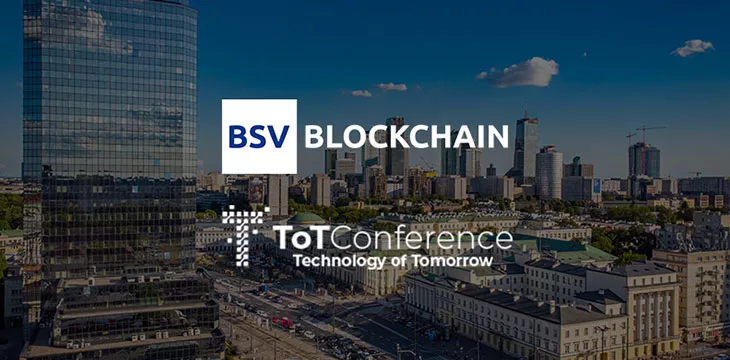Blockchain development is expanding, but the percentage of US developers has decreased

[gpt3]rewrite
“There is no reason why innovation and regulation must be mutually exclusive.”
Of the countless thought-provoking statements at this year’s Consensus 2023 conference, this is the one that stands out to me the most. Spoken by Chris Zuehlke, the global head of crypto market maker Cumberland DRW, the commentary brings together two important aspects of the economy.
The first (innovation) represents what has yet to be discovered, the potential for efficiency, revenue, growth, etc. The second (regulation) can help innovation flourish in a legal and orderly manner – or regulation can prevent innovation altogether.
Their coexistence is necessary, but when their relationship is contentious, it is very problematic for everyone. The latest development has me worried. Let me explain.
You read Crypto long and shortour weekly newsletter with insights, news and analysis for the professional investor. sign up here to get it in your inbox every Wednesday.
Blockchain developers design, build and maintain applications within crypto ecosystems. They, as developers, make a conscious effort to allocate time, intellect, talent, and resources to building things that they feel are useful.
Developers flocking to or retreating from a particular ecosystem arguably serve as an indication of the protocol’s effectiveness. Developer activity can also serve as an early indication of which crypto-focused projects are poised for growth and generating value for users.
An analogy from the physical world is apt: Often the most vibrant cities are those with the most construction. The same philosophy applies in blockchain development. If developers are building there, a protocol might be worth exploring.
Recently I came across a report showing two developments, one encouraging, the other not so much.
First, blockchain development is expanding. The report showed that there are approximately 21,700 monthly active developers across the various crypto ecosystems. The top five by rank are:
That total has grown 43% over the past two years and 110% over the past three – although it’s down 17% since November, when the FTX exchange collapse caused so much industry turmoil.
The long-term increase even as we navigate a crypto winter is a testament to the fact that crypto represents an expansion in technology and innovation. Cryptocurrencies are not just coins and tokens that exist only for speculative purposes. They also represent technologies where potentially valuable applications are being developed.
Several developers have tried to build things of value on various ecosystems, which should benefit the general public. This is positive.
However, the second development worries me. While the overall number of developers has increased, their ranks in the United States are declining. The proportion of developers based in the US has dropped to 29% from 40% in 2017.
The US is now tied with Europe, which is also at 29% after remaining relatively stable in recent years. But Asia and Africa are rising fast, so it’s reasonable to believe that the US will be knocked off the top spot.
What explains the American decline? The recent tone between the crypto space and US policymakers has become unnecessarily acrimonious. And as such, individuals in crypto have concerns about a lack of clarity and whether actions they take in the name of innovation will run afoul of regulations that have yet to be disclosed or implemented.
The lowest-hanging (but still viable) fruit to pick in this regard is Securities and Exchange Commission Chairman Gary Gensler’s comments about cryptocurrencies and what appears to be (at least on the surface) a hostile attitude toward the sector.
Much of that has been attributed to perceived contradictions between what Gensler is saying now as head of the SEC and what he has said in the past, with statements from 2018 appearing to be completely at odds with what he is now saying.
Here’s the thing: Positions evolve. It is possible for someone to change their mind on a matter. But if done without clarity, it’s easy for a situation to develop where people simply don’t believe what you’re saying, or think the motivation for change was driven by external factors.
This is not just limited to developers. Crypto firms have begun to consider overseas operations, with Coinbase reportedly considering moving a segment of its operations outside of the United States. The primary motivation for a move is apparently diversification of regulatory risk.
With Europe recently approving its Markets in Crypto Assets (MiCA) regulation, it seems more likely that US individuals and firms will seek out countries with greater regulatory clarity.
What we need is, believe it or not, for everyone to move towards sensible regulation and not inflated partisan talking points, on both sides of the political spectrum.
An example of a way forward is illustrated in a recent draft of a US stablecoin bill, which reportedly receives bipartisan support. Elements of the bill include ensuring the maintenance of adequate liquid reserves, a moratorium on algorithmic stablecoins and licensing rules for stablecoin issuers.
But the most important thing is that the two major political parties are apparently working together.
If they can’t do it more often, crypto innovation will certainly move elsewhere.
From CoinDesk Deputy Editor-in-Chief Nick Baker, here’s some news worth reading:
To hear more analysis, click here for CoinDesk’s “Markets Daily Crypto Roundup” podcast.
[gpt3]

























